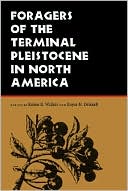Category Books
- Fiction Books & Literature
- Graphic Novels
- Horror
- Mystery & Crime
- Poetry
- Romance Books
- Science Fiction & Fantasy
- Thrillers
- Westerns
- Ages 0-2
- Ages 3-5
- Ages 6-8
- Ages 9-12
- Teens
- Children's Books
- African Americans
- Antiques & Collectibles
- Art, Architecture & Photography
- Bibles & Bible Studies
- Biography
- Business Books
- Christianity
- Computer Books & Technology Books
- Cookbooks, Food & Wine
- Crafts & Hobbies Books
- Education & Teaching
- Engineering
- Entertainment
- Foreign Languages
- Game Books
- Gay & Lesbian
- Health Books, Diet & Fitness Books
- History
- Home & Garden
- Humor Books
- Judaism & Judaica
- Law
- Medical Books
- New Age & Spirituality
- Nonfiction
- Parenting & Family
- Pets
- Philosophy
- Political Books & Current Events Books
- Psychology & Psychotherapy
- Reference
- Religion Books
- Science & Nature
- Self Improvement
- Sex & Relationships
- Social Sciences
- Sports & Adventure
- Study Guides & Test Prep
- Travel
- True Crime
- Weddings
- Women's Studies
Foragers of the Terminal Pleistocene in North America » (New Edition)

Authors: Renee B. Walker (Editor), Boyce N. Driskell
ISBN-13: 9780803248021, ISBN-10: 0803248024
Format: Hardcover
Publisher: University of Nebraska Press
Date Published: April 2007
Edition: New Edition
Author Biography: Renee B. Walker
Renee B. Walker is an assistant professor of anthropology at the State University of New York College at Oneonta. Boyce N. Driskell is the director of the Archaeological Research Laboratory at the University of Tennessee.
Contributors: Michael B. Collins, Richard J. Dent, James S. Dunbar, Stuart J. Fiedel, Kandace D. Hollenbach, Marcel Kornfeld, Steven Kuehn, Lucinda McWeeney, Asa Randall, Pamela K. Vojnovski, and David Yesner.
Book Synopsis
These essays cast new light on Paleoindians, the first settlers of North America. Recent research strongly suggests that big-game hunting was but one of the subsistence strategies the first humans in the New World employed and that they also relied on foraging and fishing.
Written in an accessible, engaging style, these essays examine how migratory waterfowl routes may represent one impetus for human migration into the Americas, analyze settlement and subsistence in the major regions of the United States, and reinvestigate mammoth and bison bone beds in the western Plains and the Rocky Mountains to illuminate the unique nature of Paleoindian hunting in that region. The first study of Paleoindian subsistence on a continental scale, this collection posits regional models of subsistence and mobility that take into account the constraints and opportunities for resource exploitation within each region: Research on the Gault site in Texas reveals new subsistence strategies there, while data from the Shawnee-Minisink site in Pennsylvania connects seed collecting with fishing in that region, and plant remains from Dust Cave in Alabama provide important information about subsistence.
With research ranging from fauna and lithic data from Paleoindian campsites in Florida that illuminate subsistence technologies and late megamammals to an analysis of plant remains from the eastern United States that results in a revised scheme of environmental changes, this volume serves as an important sourcebook and guide to the latest research on the first humans in North America.
Journal of Field Archaeology
“Should be required reading for all those interested in Paleoindian adaptations.”
—William R. Hildebrandt, Journal of Field Archaeology
Table of Contents
Subjects
 American History
American History  Native North American History
Native North American HistoryHistory
 History of Science
History of Science  Science
ScienceHistory
 World History
World History  Americas - General & Miscellaneous History
Americas - General & Miscellaneous HistoryNonfiction
 Social Sciences
Social Sciences  Anthropology & Archaeology
Anthropology & ArchaeologyNonfiction
 Social Sciences
Social Sciences  Native American Studies
Native American StudiesNonfiction
 All Nonfiction
All Nonfiction  Anthropology & Archaeology
Anthropology & ArchaeologyScience & Nature
 Earth Sciences
Earth Sciences  Paleontology - Geological Time Periods
Paleontology - Geological Time PeriodsScience & Nature
 Social Sciences
Social Sciences  Anthropology & Archaeology
Anthropology & ArchaeologyScience & Nature
 Social Sciences
Social Sciences  Native American Studies
Native American StudiesScience & Nature
 All Science & Nature
All Science & Nature  Archaeology
ArchaeologyScience & Nature
 All Science & Nature
All Science & Nature  Earth Science
Earth ScienceSocial Sciences
 Anthropology & Archaeology
Anthropology & Archaeology  Antiquities
AntiquitiesSocial Sciences
 Anthropology & Archaeology
Anthropology & Archaeology  Archaeology
ArchaeologySocial Sciences
 Anthropology & Archaeology
Anthropology & Archaeology  Socio - Cultural Anthropology
Socio - Cultural AnthropologySocial Sciences
 Native American Studies
Native American Studies  Native North American History
Native North American HistorySocial Sciences
 Native American Studies
Native American Studies  Native North American People
Native North American PeopleNonfiction
 History
History  American History
American HistoryNonfiction
 History
History  History of Science
History of ScienceNonfiction
 History
History  World History
World HistoryNonfiction
 Science & Nature
Science & Nature  Earth Sciences
Earth SciencesNonfiction
 Science & Nature
Science & Nature  All Science & Nature
All Science & Nature
